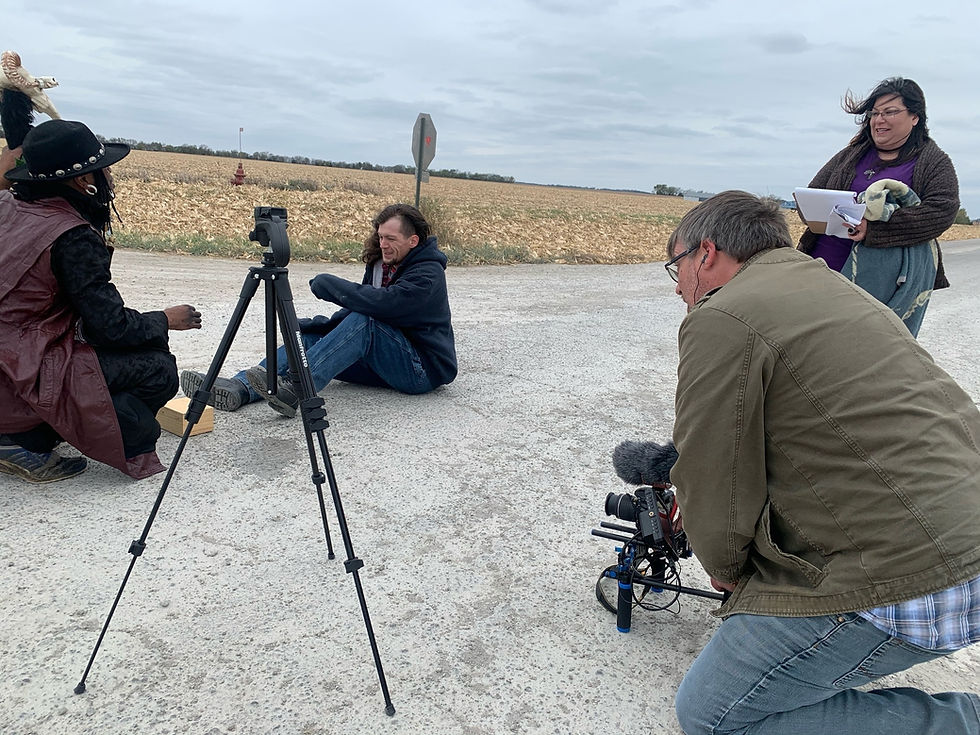It's all in the settings!
- massevproductions
- Aug 2, 2024
- 3 min read

Filmmaking with a DSLR can be a rewarding experience, providing flexibility and high-quality results that rival more expensive equipment. However, achieving that cinematic look requires understanding and mastering your camera's settings. Here’s a few tips to help you navigate the settings for filmmaking.
Resolution and Frame Rate
Resolution: For filmmaking, you’ll typically want to shoot in 1080p or 4K resolution. 4K provides the highest quality and allows for more flexibility in post-production, such as cropping or stabilizing footage without losing resolution.
Frame Rate: Standard frame rates for cinema are 24 fps (frames per second). It gives your footage a classic cinematic look. For a more dynamic and realistic feel, especially for action scenes, 30 fps can be used. Higher frame rates like 60 fps or 120 fps are great for slow-motion effects.
Shutter Speed:
The rule of thumb for shutter speed is to double your frame rate. If you're shooting at 24 fps, set your shutter speed to 1/50th of a second. This creates natural motion blur, contributing to the filmic look. Adjusting the shutter speed can drastically alter the feel of your footage. Faster shutter speeds (1/1000th of a second) result in a staccato effect, which can be useful for fast action scenes.
Aperture (F-Stop):
The aperture controls the amount of light entering the lens and the depth of field. A lower f-stop (e.g., f/1.8) creates a shallow depth of field, beautifully blurring the background and making your subject stand out. This is great for dramatic scenes or interviews. Higher f-stops (e.g., f/16) keep more of the scene in focus, which is useful for landscapes or scenes where you want everything sharp.
ISO:
ISO determines the camera’s sensitivity to light. Aim to keep your ISO as low as possible to avoid grainy footage. For well-lit environments, an ISO of 100-400 is ideal. In low light, you may need to increase ISO, but try not to exceed 1600 to maintain image quality.
White Balance:
White balance ensures your colors are accurate and natural. Set your white balance according to your lighting conditions: use the daylight setting for outdoor shoots, tungsten for indoor lighting, and custom white balance for mixed lighting environments. Consistency in white balance is crucial to avoid color shifts in your footage.
Picture Profile:
Many DSLRs offer picture profiles that can be adjusted to enhance your footage. Common profiles include Standard, Neutral, and Flat. For filmmaking, a Flat or Neutral profile is recommended as they preserve more detail in highlights and shadows, providing greater flexibility in post-production color grading.
Focus
Manual Focus: For greater control and precision, use manual focus. Autofocus can be unreliable and noisy, especially in critical shooting situations. Practice focusing manually to ensure your subject is always sharp.
Focus Peaking: If your camera supports it, enable focus peaking, which highlights the areas in focus. This is particularly useful when shooting with a shallow depth of field.
Stabilization
Camera shake can ruin otherwise great footage. Use a tripod, gimbal, or shoulder rig to stabilize your shots. Many modern DSLRs also feature in-body stabilization which can be a great help for handheld shooting.
Audio
Great visuals need great audio. DSLR microphones are generally not sufficient for professional audio quality. Use an external microphone, like a shotgun mic or lavalier, and monitor your audio levels to ensure clear, distortion-free sound.
Lighting
Natural light is free but unpredictable. Invest in a basic lighting kit to control your scene's lighting conditions. Three-point lighting (key light, fill light, and backlight) is a fundamental setup for balanced, professional-looking footage.
Whether you're a seasoned filmmaker or a beginner, keeping these settings in mind will help you capture stunning, professional-looking footage with your DSLR.




Comments